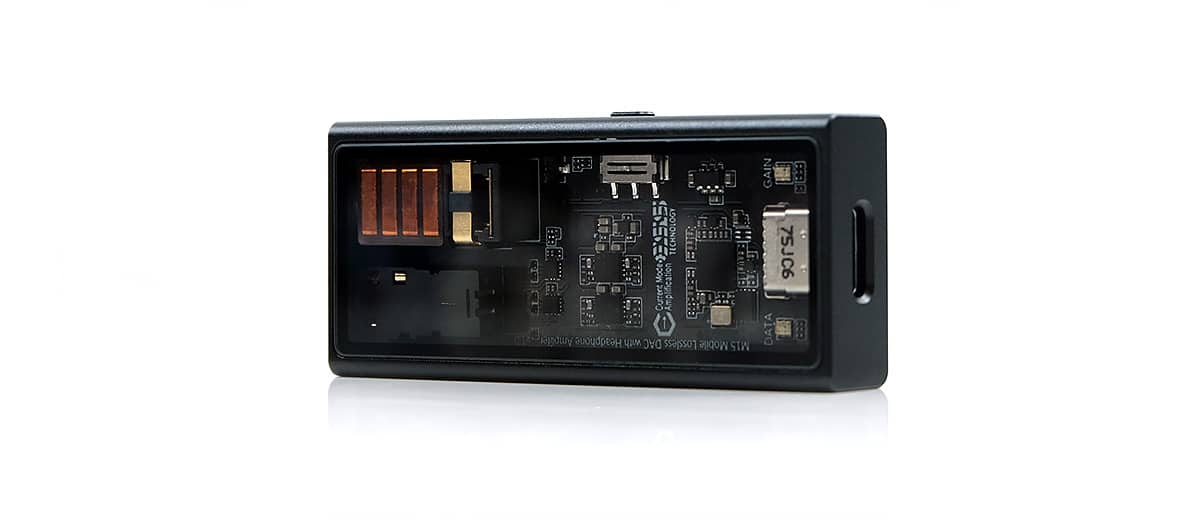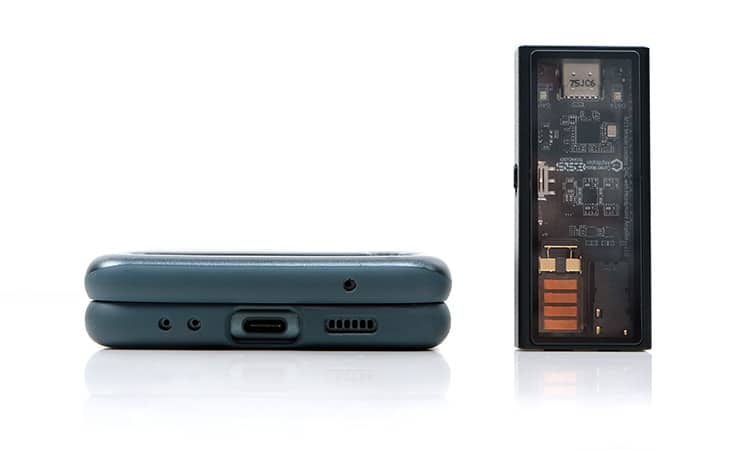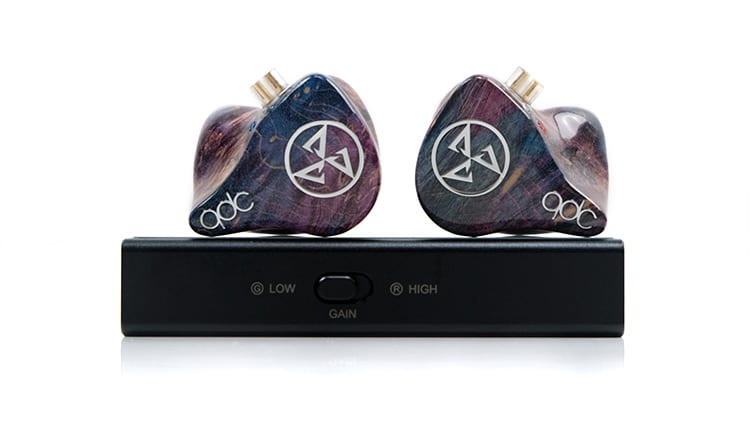Sound Impressions
Summary
The Questyle Q15 is probably the most dynamic and resolving dongle I have tested to date and I have tested quite a few in my time despite not writing any formal review this far.
It excels at driving inefficient monitors but also with some surprisingly satisfying results with harder-to-drive headphones when compared to competing dongles.
The coloration is relatively neutral to natural, with a very finely judged harmonic balance. It is lacking in any harshness but at the same time excelling at digging really deep and producing some excellent sub-bass rumble.
Dynamic driver hybrids such as the 64 Audio Duo and UM’s MEXT, in particular, respond beautifully with some excellent power and authority. Even more intimate BA monitor pairings such as the Noble Audio Zephyr sound punchy and lively with some impressive midrange clarity.
Probably what is most impressive is the technical capability of the M15. It sounds very controlled from top to bottom with a linear-like tuning and an emphasis on pushing forward detail retrieval in a three-dimensional manner.
Other dongles might sound smoother or perhaps more vocal-focused in a way but lack that staging depth and instrumental/vocal separation. Certainly, if you are using an M12 this is a fairly large jump in clarity and dynamic range with that additional balanced output offering plenty of additional headroom to the performance.
Timbre
The M15 walks a tight rope brilliant between accuracy and a natural sounding timbre. As a result, the tone feels precise but with a slightly liquid lilt or a marginally softer attack combined with a short decay and a robust body.
If you are coming from the smaller M12 it will sound much more neutral and reference-like but compared to the more romantic delivery of the RU6 it settles for a pleasing solid-state tuning.
As a result, note attacks feel dynamic and clean but not sharp, thin, and unforgiving either. The shorter decay helps with perceived clarity and space, particularly with intimate-sounding monitors such as the Zephyr. There is just enough treble infusion to create a nice level of percussion presence without sounding brittle or overtly splashy either.
There is a degree of vibrance shining through on the midrange instrumental and vocal timbre from the additional treble presence over something like the RU6. The notes are much less rounded with more textual character compared to the W2 which can sound a little denser but also more congested.
What I loved most was the fundamental performance of the M15. Dynamic driver pairings sounded dense and powerful but without any overworked bloom and additional warmth riding up the FR at the same time.
Staging & Dynamics
Probably the stand-out feature of the M15 with an incredibly well-defined and powerful sounding low-end extension, exemplary bass layering, and a spacious and holographic treatment of most pairing midrange performances. In short, it does wonderfully well at delivering a very ‘filled-in’ soundstage without sounding congested.
There are dongles though that I would consider having a slightly wider staging property such as the Cayin RU6 but it’s slightly less holographic and more vocal focused with a softer and slightly shallower low-end performance.
The M15 doesn’t push the vocal imaging as far forward but instead shapes and creates more space around and behind the vocals so allowing them to occupy a very defined level of space. It never felt congested through the mids with any pairing I tested.
The top-end has plenty of headroom but the presence isn’t too forced which is how I like my treble to sound. It doesn’t overly emphasize the brilliance region unless your paired monitor is already tuned to accentuate one aspect of the presentation over another.
Synergy
Efficiency
The on-paper rating of the M15 at SE 29.95mW and 72.72mW balanced using a 32Ω load in low gain should be flexible enough for a wide range of IEMs.
And true enough, using 2 smartphones, the Samsung Z Flip 3 and the Xiaomi Note 11 I could get an adequate level of volume control via Android’s own drivers, albeit a bit aggressive given their larger stepped incremental increases.
However, when using the dedicated USB driver mode via HiBy Link the Achilles heel of having no onboard volume control was a factor with the gain levels too high to zero out the volume levels with the M15. The volume stepped increases were also too aggressive so micro control was quite limited, even in low gain.
I can get absolute silence from the Cayin RU6 and the LP W2 in the same mode because they are able to zero out volume onboard and neither offers any hiss there either. Volume increases are also more refined. If Questyle can bring out a V3 of this model with a built-in rocker for the volume it would be very welcome.
Hiss is slightly stronger than the dongles we tested it against including the RU6 and the LP W2. Of the three, the M15 background hiss levels were the highest when paired with a Campfire Audio 2020 though by no means an invasive level of hiss in its own right. It is still relatively low-key and manageable.
With less sensitive IEMs like the 64 Audio Duo, the background is perfectly black so it only becomes noticeable when the volume is zero with highly sensitive monitors.
Power
I tested two Sennheiser models, the 150Ω HD660S and the 300Ω HD800 as well as the Meze Empyrean. As a dongle, M15 does very well indeed with all three and is much better than I expected given its mW output rating on paper which seems weaker than the competing models.
Of the three tested dongles, I felt the dynamic range and the ability to fill out the stage lay with the M15, especially the HD800. It is a close-run thing with the RU6 and much of that had to do with the way the RU6 is tuned with its softer laid-back bass imaging as much as the ability to drive the HD800.
With the W2 the higher the volume the shoutier it felt, or simply it got louder but still relatively center-focused in its imaging and more two-dimensional in its layering. The M15 brought an improved staging depth and wider stereo imaging giving the sound a more complex and holographic dimension to it without becoming shouty in the process.
Pairings
Based on the above the ideal pairings are monitors that are slightly less than hyper-efficient or at least those with BA drivers that are not overly sensitive.
From that selection, I would say dynamic driver hybrids or at least IEMs with larger woofer-type BA drivers are going to benefit the most from the Q15’s dynamic and expansive presentation.
For example, the 64 Audio Duo sounded incredibly powerful and immersive with the Questyle M15, especially with a deep-sounding bass synth that resonated very strongly. Its open-type design also allowed for the M15 to image wide and tall at the same time creating a very engaging staging quality. Perhaps my favorite pairing in this pairing process.
If you are rocking slightly more intimate IEMs such as the Noble Audio Zephyr then the Duo’s expansive depth becomes a lot more focused and punchy sounding with the M15. The pairing also does well to keep the Zephyr from becoming too intimate or forward sounding with some excellent clarity and separation in the mids.
I also would give a shout-out to slightly darker-toned monitors such as the UM MEXT. You still get that excellent low-end extension from the M15 pairing but at the same time better treble clarity than the likes of the RU6 and W2.
That helps bring some welcome airiness to the MEXT presentation and a bit more perceived spaciousness to the midrange and vocal performance also. It does not cast as wide an image as the RU6 with the MEXT but certainly a taller and deeper quality with improved upper harmonic influence that gives nuanced detail a bit more of a lift.




